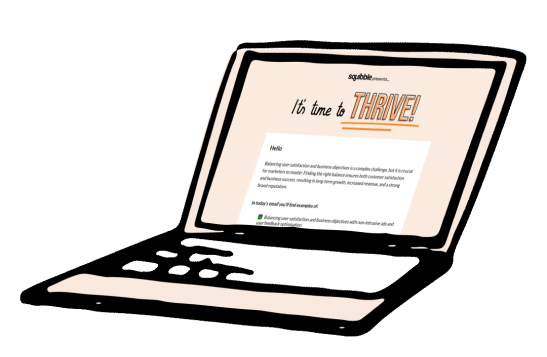User experience matters. It’s why we focus so squarely on achieving great UX design at Squibble. We’re evangelists for the approach. But one of the questions we get asked a lot – understandably – is, “How can you measure UX?”
The answer is through user metrics. It’s critical that businesses are able to measure user experience because achieving high satisfaction in their designs can make such a huge difference to retention and conversion rates.
Bad websites have high bounce numbers – that means, essentially, that users leave them very quickly, and often never come back. You can talk to us about reducing your bounce rate; but the trick is to understand how user experience can be measured – and then start building solutions which take those numbers into account.
What Are The Causes of User Frustration?
Step one is to understand what users don’t like. User frustration powers user disengagement. We’ve all been there: lost on a website, unable to figure out where to go or what to click. None of us hang around for long in that situation – we’ll go somewhere that doesn’t make us work to get what we want.
Removing these impediments to user experience is the first step to ensuring your conversion rates begin to improve. Common frustrations include text that is too small, buttons that are hard to find, errors that lead to data loss and content walls – those gateways we have to go through to get what we want, like log-in screens or cookie pop-ups.
Some of these have advantages, of course: gathering consent for cookies is a legal requirement, and using high-value content to persuade users to share contact details can be a great way to build audiences. But these have to be off-set against the danger of losing users.
Measuring User Experience
How, then, can these dangers be measured in order to arrive at a design which users find not just tolerable but actively desirable to use?
There are several key metrics that businesses can monitor in order to understand how their user experience design is faring. The first, of course, is conversions: how many users are turned into purchasers by a given website? A comparison as simple as the number of visits a month versus the number of purchases a month can help gesture towards a site’s success in this regard – but so might the submission of contact information, if that’s a core goal of the website in question.
The frequency of key user interactions, then, has to be the primary measure of user experience quality. Equally, however, old-fashioned qualitative feedback can help: a user feedback survey on a website, with a few carefully chosen questions, can help fill out the detail contained within the raw conversion statistics.
There are other metrics, too, of course, and which are available – and which a business should attend to – will depend on the site in question. Sites with a specific flow, for example, might offer useful data on at what points in the funnel users leave before completion – and this can point out key frustration points that need finessing. The customer lifecycle on a given site can be a treasure trove of data in this regard, and part of good UX measurement is understanding where the most useful metrics lie.
Are User Metrics A Part of User Experience Design?
Metrics are only useful in so far as they have meaningful impact – and the key reason to monitor UX numbers is to apply them to user experience design.
What does this mean? You can read our post about user experience design here – it sets all the essentials. Fundamentally, UX design is about incorporating user feedback into how a business goes about developing a product.
If a business already has a product in the ‘wild’, user feedback doesn’t need to be direct: how users interact with an existing product is ample feedback enough to begin to improve it. User metrics aren’t just a part of user experience design, then – they can be its very lifeblood.
Indeed, that’s the answer to this blog’s question. What are user metrics? They’re a definitive guide to improving a product.






